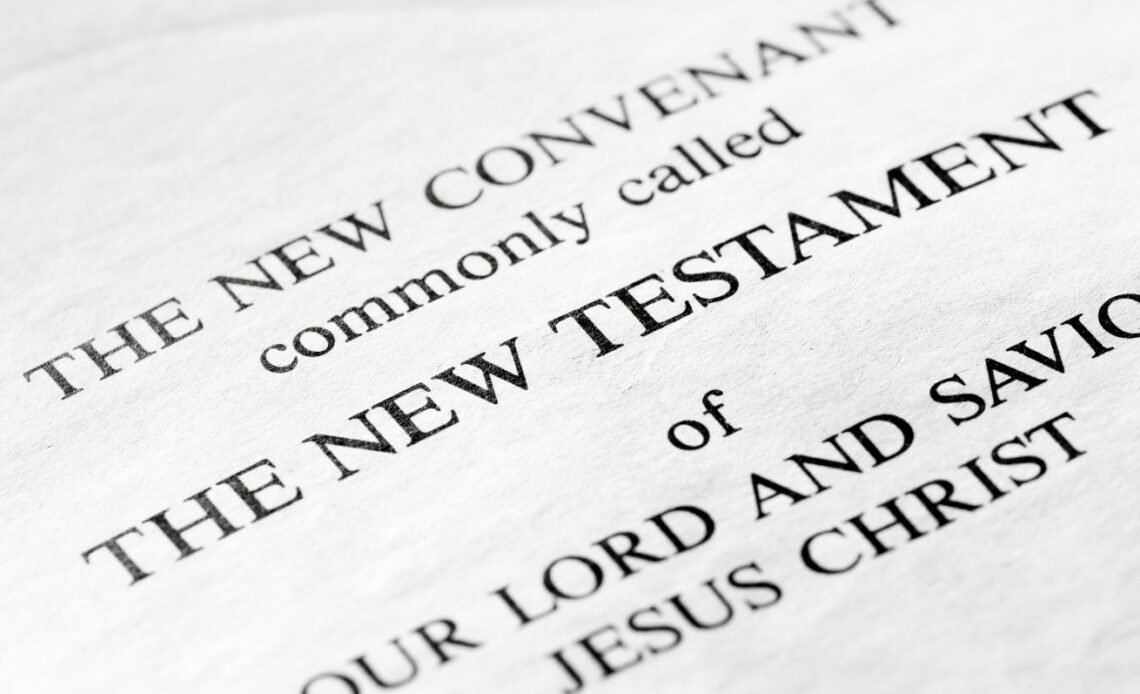Once in a while as someone reads through the Scriptures, he will encounter a passage that seems absolutely confusing. Sometimes the problem may be that he is not reading the portion of Scripture in its context, but instead he is isolating a passage from what comes before and after it. Another problem that could arise is that the reader may be influenced by the cultural norms of his day.
This can cause the same man to place his thoughts into the Scriptures he is reading, rather than drawing out what is actually being said. Close to the previous thought is the fact that the modern-day Christian is separated by many years from the culture of those in Bible times. The fact of the matter is that many customs, practices, and habits were different during Bible times than they are today.
In the Old Testament, we can read of the way that the Israelites were commanded not to boil a young goat in its mother’s milk. When someone reads the Scripture previously referenced, generally speaking, he may not get the point that is being conveyed unless he endeavors to study during times when confusion arises. For many, the response is to keep reading and accept the fact that they do not understand what is being said. In a sense, this happens to all of us. Nevertheless, the Christian must take the time to study the Word of God and to grow in his understanding of the Scriptures.
Mark 2:18-22 is a passage that is often misunderstood and misapplied. Let’s see what Jesus had in mind in this portion of Scripture. (Reading the passage ahead of time could be helpful.)
The setting of the text
The passage starts out in this way: “And the disciples of John and of the Pharisees used to fast: and they come and say unto him, Why do the disciples of John and of the Pharisees fast, but thy disciples fast not?” (KJV, Mark 2:18). Establishing the setting of the text is important.
The setting consisted of a group of outcasts meeting with Jesus at Matthew’s house. Matthew had recently been called to follow Christ. Matthew laid down his livelihood and followed Jesus the moment Jesus spoke the word to him. Shortly after this moment, which is where we find ourselves in the portion of Scripture at hand, Matthew threw a big feast. The guest of honor was none other than Jesus Christ Himself.
Matthew did not know a lot of wonderful people; rather, his associates were the outcasts of society. Therefore, Jesus, along with His disciples, sat down with the riff-raff of society. Together, they celebrated the fact that Matthew had come to know the Lord.
As this celebration was underway, the Pharisees began to plot against Jesus. They did not like what they saw. They believed that there should have been a great divide between the holy and the lost. In a sense, this is true, but there is more to consider, as one can see exemplified in the life of Jesus Christ.
The Pharisees wondered why John and his disciples, along with the Pharisees and their followers, fasted, while Jesus and His disciples did not. The Pharisees assumed that Jesus was straying from the faith and that His followers were onboard a sinking ship.
In the Old Testament, God only commanded His people to fast once a year, during the Day of Atonement. However, the Pharisees encouraged fasting twice a week, on both Mondays and Thursdays (Luke 18:12). While Jesus allowed fasting, He also sought to make it clear that fasting was not a necessity for His disciples.
The joy to be had in Christ
But why did Jesus declare that fasting was not a necessity for His disciples? Scripture says, “And Jesus said unto them, Can the children of the bridechamber fast, while the bridegroom is with them? as long as they have the bridegroom with them , they cannot fast. But the day will come, when the bridegroom shall be taken away from them, and then shall they fast in those days” (Mark 2:19-20). Jesus relates His disciples’ lack of fasting to that of men being with a bridegroom during a wedding. He was in essence saying that a wedding was a time of feasting.
As the Pharisees looked upon the feast that was occurring at Matthew’s home, which was most likely taking place on either a Monday or Thursday, they were appalled. They saw Jesus, a Jew for that matter, running contrary to their instruction on how to live a holy life. But little did they know that Jesus was the Savior in their midst, and it was not a time for mourning (symbolized through fasting), but rather a time of celebration and joy (symbolized through feasting).
In verse 20, Jesus moves quickly to discussing the day in which He would be taken from the disciples. This is Mark’s first reference to the cross. A day would come when Jesus would be arrested, beaten, and hung upon a tree. Jesus would die in the place of sinful man, be buried, and rise from the dead. However, this would be a day when the disciples would fast. It would be a time of sorrow and mourning, as Jesus would leave the presence of His disciples. The sorrow that would fall upon their hearts would illicit times of fasting rather than feasting.
The newness of the covenant
Jesus also sought to create a New Covenant rather than mend the Old. Scripture says, “No man also seweth a piece of new cloth on an old garment: else the new piece that filled it up taketh away from the old, and the rent is made worse” (Mark 2:21). After this statement, found in Mark 2:21, Jesus moves into a different illustration about wine and a wineskin, which was intended to convey the same point.
If there was a hole in a piece of old clothing, sewing a new patch over it would not fix the problem but may actually make the hole bigger. The new patch would shrink when it became wet, and thus, it would pull at the old piece of clothing and make the hole bigger than it was before.
Jesus related this illustration, and the one concerning the wineskin, to the old Mosaic Law. He was stating the fact that the Old Law was an imperfect law; it had a hole in it. However, the solution was not to amend the Law but rather to create a New Covenant.
It would have been impossible to clean up the Old Law. In Christ, newness had come. The Law did not justify; it did not sanctify; it did not cleanse. The Law only had the ability to condemn. The Law consisted of letters written on stone, and there was no life to be found in this Law – only death.
In Christ, the New Covenant has arrived. In Christ, there are letters written on human hearts by the power of the Holy Spirit. This covenant is a life-giving covenant. It is a covenant that promises sanctification. It is a covenant that promises that God will work within the believer through Christ and by the Spirit. It is a covenant that has been enacted by the blood of Christ and is assured through His resurrection from the dead.
The people of Jesus’ day may not have wanted a New Covenant. They surely did not want Christ. Nevertheless, the futility of their ways would one day become evident. It is an impossibility to be made righteous through the Law. It is an impossibility for a guilty sinner to save himself. It is impossible for someone’s good deeds to outweigh his bad deeds and for God to be pleased with this and thus allow entrance into heaven. The only hope that man can have is that God would make a way by grace for man to be reconciled to God. Through Christ, the door has been opened wide, and Jesus calls, “Come to me.”
Final prayer
Father, I thank You for sending Christ to be my wrath-bearing substitute. I thank You for the New Covenant that has been purchased by the blood of Christ. In Jesus’ name, Amen.


